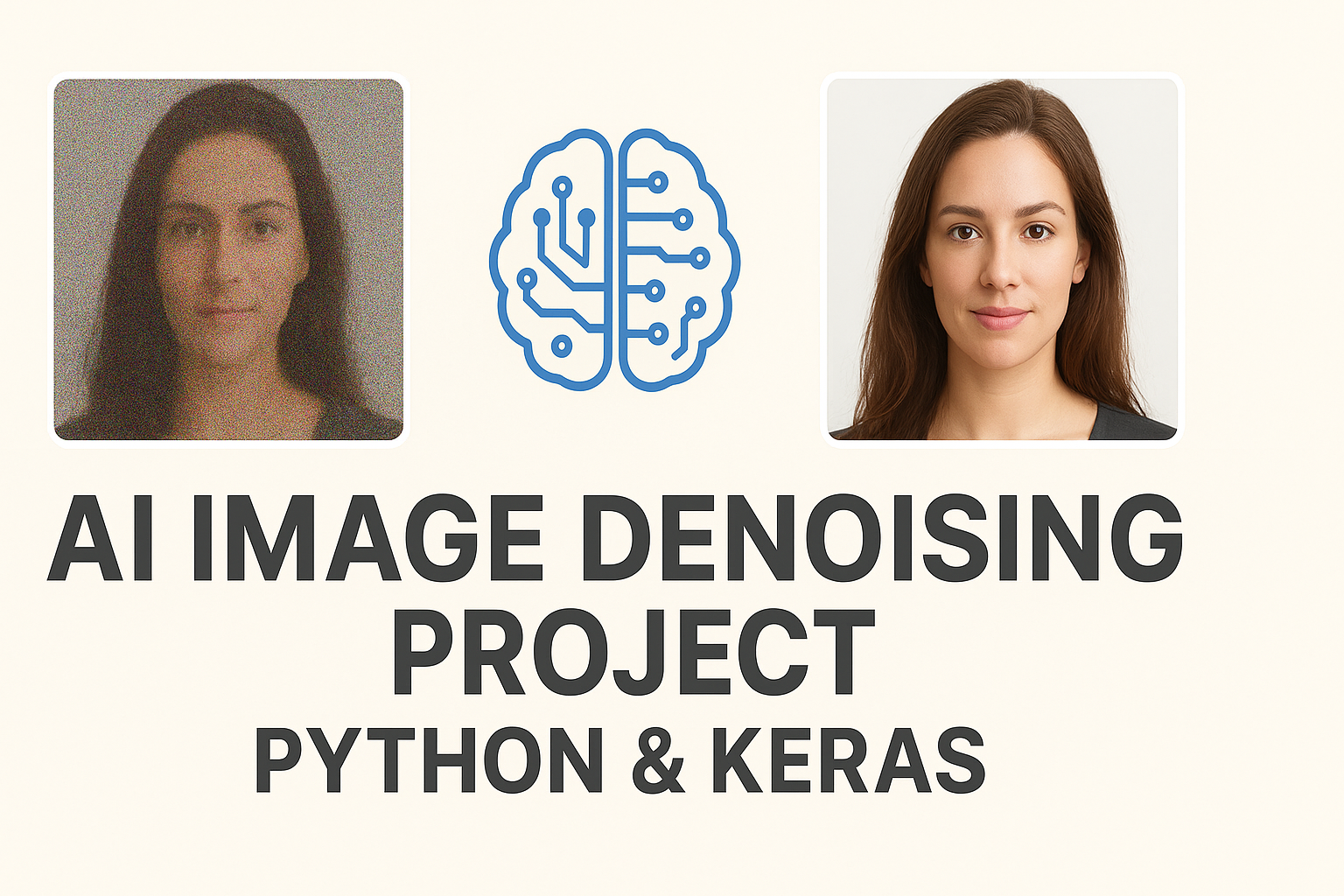Digital images often suffer from noise—random variations in brightness or color that reduce visual quality. This noise can be caused by low-light conditions, camera sensors, or transmission errors. Removing it is essential for applications like medical imaging, satellite vision, photography, and security systems.
The AI-Powered Image Denoising Application is an interactive tool built with Python, Keras, and deep learning that allows users to upload noisy images and instantly view a denoised version using a trained neural network model. This project is perfect for students, AI enthusiasts, and researchers interested in image processing with deep learning.
Project Overview
The Interactive Image Denoising Application provides a web-based interface where users can:
-
Upload a pre-trained Keras model (
.kerasor.h5). -
Upload a noisy image in formats like PNG, JPG, or BMP.
-
Generate and visualize a cleaned, denoised image side by side with the original.
By following a structured pipeline (preprocessing → prediction → postprocessing → visualization), the system makes image restoration simple and accessible.

Features & Functionality
✅ Model Upload Support – Load custom Keras models trained for denoising.
✅ Instant Visual Feedback – Compare noisy and denoised images side by side.
✅ Model Summary – View uploaded model architecture directly in the app.
✅ Automated Preprocessing – Resizes and normalizes images (200×200 pixels, 0–1 range).
✅ Interactive UI – Clean, user-friendly web app interface.
✅ Multi-Format Support – Works with .png, .jpg, .jpeg, .bmp.
Tech Stack
- Programming Language: Python
- Deep Learning Framework: Keras / TensorFlow
- Web Framework: Streamlit
- Libraries: NumPy, OpenCV, Pillow
- Model Input: 200×200 color images normalized to [0,1]
System Workflow
- Upload Model → User loads
.kerasor.h5file. - Upload Noisy Image → Select an image with noise.
- Preprocessing → Image resized to 200×200, normalized, reshaped.
- Prediction → Model predicts a denoised version.
- Postprocessing → Output converted into a viewable image.
- Results Display → Original and denoised images shown side by side.
Conclusion
The AI-Powered Image Denoising Project demonstrates how deep learning can significantly improve visual quality by removing noise from images. With an interactive web interface, students and researchers can test their trained models in real time, making it both educational and practical.
This project is a great fit for final-year AI/ML students, computer vision researchers, and professionals in image processing.
